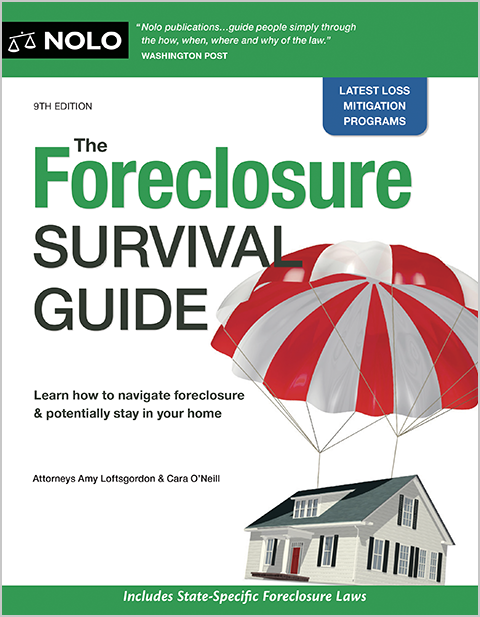In this loan assumption guide, you'll learn how mortgage assumption works, which loans are generally assumable, and strategies for avoiding foreclosure.
If you're looking for ways to avoid foreclosure or transfer your home because you're behind on mortgage payments, you might be able to complete a loan assumption. When the new owner assumes the loan, that person becomes responsible for the mortgage debt. Or, if you inherit a mortgaged property or get ownership through a divorce or other intra-family transfer but can't afford the payments, assuming the loan as part of a loan modification might allow you to keep the property.
This comprehensive guide explains how mortgage assumptions work, which loans are generally assumable in 2025, and what you need to know about transferring your mortgage, borrower liability, and the legal requirements.
- Understanding Promissory Notes vs. Mortgages
- What Is a Loan Assumption?
- Loan Assumption Process
- Steps in a Loan Assumption
- Borrower Liability After a Mortgage Assumption
- How to Tell If Your Loan Is Assumable
- The Impact of Due-On-Sale Clauses
- Exceptions to Due-On-Sale Restrictions (Garn-St. Germain Act)
- Assuming a Loan That's in Default
- Frequently Asked Questions (FAQs) About Mortgage Assumptions
Understanding Promissory Notes vs. Mortgages
Before fully understanding what it means to assume a loan, you must understand the difference between a promissory note and a mortgage or deed of trust. (For the purpose of this article, the terms "mortgage" and "deed of trust" mean the same thing.)
People often use the term "mortgage" to refer to both the promissory note and the mortgage. But the note is the document that creates the obligation to repay the loan. The mortgage, on the other hand, gives the lender a way to enforce that promise. That is, the lender may foreclose and use the proceeds from the foreclosure sale to repay the loan.
Following a foreclosure or short sale, in many states, the lender can go after the borrower for the deficiency between the sale price and the borrower's total debt. However, certain states bar deficiency judgments after a foreclosure or short sale. Whether the lender can pursue a deficiency depends on state law. The promissory note establishes a borrower's liability for the deficiency.
What Is a Loan Assumption?
An "assumption" is a transaction where a new person takes over financial liability for the loan, either with or without a release of the original borrower's liability.
Loan Assumption Process
Here's how an assumption generally works: Say you want to sell your home and deed it to another party, with that new owner taking over responsibility for repaying the loan you took out. If an assumption is allowed, the lender usually requires the new owner to qualify and go through an approval process to assume the loan. The lender will probably run a credit check on the buyer and verify the buyer's employment and income.
Once the assumption is approved, and the necessary documents are signed, the buyer steps into your (the original borrower's) shoes and starts making the monthly payments and complying with other terms of the existing loan. The loan terms, interest rate, principal balance, and monthly payments remain unchanged.
You (the seller or transferor) will remain liable for the debt unless the lender releases you from this obligation. The new homeowner also takes on personal liability for the debt.
Steps in a Loan Assumption
Here's a detailed step-by-step process of what's involved in a loan assumption.
Step 1. Confirm the Loan Is Assumable
First, you'll need to review your loan documents and contact your lender to verify if your mortgage is legally assumable. Most FHA, VA, and USDA loans are, while most conventional loans are not.
Step 2. Reach an Agreement With the Buyer Who's Assuming Your Loan
You and the buyer need to agree on a purchase price for the property. As part of your negotiations, be sure to determine how much of the purchase price will cover any difference between the home's sale price and the remaining mortgage balance (the deficiency).
Step 3. Apply for an Assumption With Your Lender
Request a loan assumption package from the lender. You'll need to submit the required financial documents and whatever other application materials the lender requests.
Step 4. Receive Lender Underwriting and Approval
The lender will review the buyer's information, including their creditworthiness and other eligibility criteria. You might have to get a home appraisal or have an inspection completed. Also, both the buyer and seller might have to supply further information during the process. Basically, provide the lender with whatever they ask for. Then, hopefully, the lender approves the loan assumption.
Step 5. Closing
Once approved, the parties schedule a closing, similar to a standard home purchase closing. The buyer will sign an official assumption agreement, promissory note, and other documents. The entire process might take 45 to 90 days, depending on the situation.
Borrower Liability After a Mortgage Assumption
In some loan assumptions, the lender will release the original borrower from the obligation created by the promissory note. But in other cases, the original borrower remains liable on the note. In practice, releases are common in lender-approved FHA and VA loan assumptions, but less common in conventional loans.
So, depending on state law and the circumstances, if the new owner stops making mortgage payments and loses the home to foreclosure, the lender might come after the original borrower, along with the person who assumed liability, for a deficiency judgment to collect the debt.
How to Tell If Your Loan Is Assumable
Not all loans are assumable. Loans that the Federal Housing Administration (FHA), the Department of Veterans Affairs (VA), or the U.S. The Department of Agriculture (USDA) back (meaning, FHA, VA. or USDA provides a guarantee or insurance on the loan from a private lender) might be assumable if specific requirements are met.
Also, if the paperwork states that the loan is assumable, you can transfer the property and loan to a new owner. Look for an assumable clause in your contract. If the loan contract is silent on this matter, the loan is considered assumable in most states. However, you should be aware that most modern contracts contain due-on-sale provisions, so "silent" contracts are uncommon today.
The Impact of Due-On-Sale Clauses
Many, if not most, mortgage contracts contain a "due-on-sale" provision. This clause states that if the property is transferred to a new owner, then the full loan balance can be accelerated. Once the loan is accelerated, the entire loan balance must be repaid. Generally, the loan can't be assumed when a mortgage has a due-on-sale clause.
Check your mortgage contract to determine if your loan is subject to a due-on-sale clause. Be aware that the paperwork might not specifically use the words "due on sale." It could refer to a "transfer of the property" or something similar.
Exceptions to Due-On-Sale Restrictions (Garn-St. Germain Act)
The federal Garn-St. Germain Depository Institutions Act of 1982 generally allows due-on-sale clauses in mortgage contracts. But the Garn-St. Germain Act bars enforcement of a due-on-sale clause after some kinds of property transfers, including, but not limited to:
- a transfer by devise, descent, or operation of law upon the death of a joint tenant or tenant by the entirety
- a transfer resulting from a borrower's death to a relative who will occupy the property
- a transfer to a borrower's spouse or children who will occupy the property, and
- a transfer resulting from a decree of dissolution of marriage, legal separation agreement, or incidental property settlement agreement where the transferee becomes the owner and occupies the property. (12 U.S.C. § 1701j-3, 12 C.F.R. § 191.5 (2025).)
So, if you get real estate ownership due to one of these kinds of transactions, the lender can't enforce a due-on-sale clause. You may make the payments on the loan (even though you weren't an original borrower), and you can assume the debt if you want to. (Note that the Garn-St Germain Act gave states with prior laws concerning due-on-sale clauses three years to reenact or enact new restrictions. But only a couple of states acted within this period. In those states, federal law doesn't preempt due-on-sale provisions for some specific kinds of loans. However, in nearly every state today, federal law controls due-on-sale enforcement.)
Also, after a Garn-exempt transfer, the ability-to-pay rule doesn't apply, and the person assuming the loan shouldn't have to go through an underwriting process or credit screening, except in some instances, like in the case of a Fannie Mae loan, when the original borrower wants a release of liability.
Sometimes Lenders Won't Enforce a Due-On-Sale Clause
Sometimes, a lender will agree to forgo the enforcement of the due-on-sale provision if it means it will start receiving a steady stream of payments from someone. The lender might also agree to an assumption if the property's current market value is less than the outstanding indebtedness and the purchaser is willing to make up the difference in cash.
Assuming a Loan That's in Default
If a borrower is behind in mortgage payments at the time of the transfer, then the person assuming the loan might have to cure the default to prevent a foreclosure. Usually, the new owner will either pay the overdue amount in full, called "reinstating" the loan, or come to an agreement with the lender to catch up on the past-due amounts in a repayment plan or as part of a modification.
Frequently Asked Questions (FAQs) About Mortgage Assumptions
The following FAQs and topics answer common questions about mortgage loan assumptions.
Can I assume a loan without bank approval?
No, in almost all cases, you need lender approval for a loan assumption. As a seller, attempting to do a loan assumption without getting approval first will probably trigger a due-on-sale clause, which likely cause the lender to demand full repayment of the loan immediately.
What are the pros and cons of a mortgage loan assumption?
The upsides of completing a loan assumption for buyers include a lower interest rate and easier qualification for some buyers. An upside for sellers is that an assumable loan with a low interest rate is appealing to home buyers. If you have an assumable loan with a low rate, you might be able to find a buyer (and avoid foreclosure) without too much difficulty. Also, closing costs are often than lower than for a regular home purchase.
Some downsides to a loan assumption are that not all loans are assumable. Also, as a seller, you might still be responsible for the debt if you don't get a release of liability.
What are some common mistakes or pitfalls to avoid?
Failing to get lender approval for an assumption or not formally releasing the seller from liability are some mistakes to avoid.
Where can I get more information about loan assumptions or ways to avoid foreclosure?
An assumption isn't the only way to prevent a foreclosure. If you're struggling to make your mortgage payments, your home is underwater, or foreclosure is imminent, consider talking to a foreclosure attorney to learn more about your options. A HUD-approved housing counselor is also an excellent resource for information about loss mitigation options and how loan assumptions work.
- Understanding Promissory Notes vs. Mortgages
- What Is a Loan Assumption?
- Loan Assumption Process
- Steps in a Loan Assumption
- Borrower Liability After a Mortgage Assumption
- How to Tell If Your Loan Is Assumable
- The Impact of Due-On-Sale Clauses
- Exceptions to Due-On-Sale Restrictions (Garn-St. Germain Act)
- Assuming a Loan That’s in Default
- Frequently Asked Questions (FAQs) About Mortgage Assumptions

